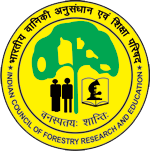Chemistry and Bioprospecting / Major Areas
Research Activities
Objectives
Long term:
- Bioprospecting of renewable forest resources
Short term:
- Bioassay-guided isolation and characterization of bioactive compounds with medicinal, therapeutic, phytoceutical, nutraceutical, and biopesticidal potential, with emphasis on value addition
- Development and commercialization of biopesticides, bioboosters, and biocolourants through industry partnerships.
- Diversity assessment of tree species to identify superior chemotypes and enable large-scale propagation
- Establishment of tissue culture protocols for elite genotypes of tree species such as teak, bamboo, melia, and red sanders to enhance productivity.
- Multi-site evaluation of selected tree clones to identify site-specific performers for large-scale plantation programmes.
- Development of descriptors and DUS (Distinctness, Uniformity, Stability) testing guidelines for indigenous forest tree species, alongside the establishment of Field Gene Banks.
- Development and commercialization of biopesticides, bioboosters, and biocolourants through industry partnerships.
- Processing and value addition of non-timber forest products (NTFPs) to enhance livelihood opportunities for forest-dependent communities.
- Development of seed production systems for commercially important tree species to ensure a sustainable supply of quality seeds and seedlings.
- Strengthening collaborative tree seed supply networks to support restoration initiatives.
Our research areas focus on the bioprospecting of renewable forest resources, with emphasis on:
- Biopesticides: Development of non-edible tree-borne oil–based, microbial, and botanical formulations.
- Bioboosters: Organic and forest biomass–based growth enhancers.
- Biocolourants: Natural colourants for applications in food, cosmetics, textiles, and healthcare.
- Biofuels: Production of bioethanol and biodiesel from forest resources.
- Biodegradable containers : Chitosan based materials.
- Biocure: Utilization of medicinal plants for managing minor ailments.
- Lab to Land” technology transfer: Bridging research outputs with field-level applications.
- Tribal development programmes: Empowerment through livelihood initiatives and technology transfer.
- Value addition of NTFPs: Enhancing utility and market potential of non-timber forest products.
- Extension and education: Capacity building and knowledge dissemination.









